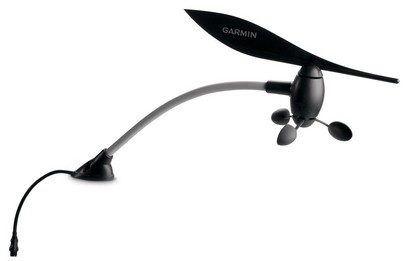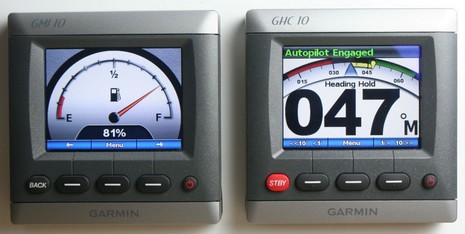Garmin GWS 10, N2K weather whirly

It’s a good day here when the sun is shining invitingly and a noteworthy, yet easy to write about, new product is introduced. So a Panbo thanks to Garmin for the new GWS 10 wind and weather sensor, bigger image here. What with NMEA 2000 proliferating widely, it seems a little strange that this might be the first standard whirligig (i.e. electro-mechanical) wind sensor with a standard N2K plug on it, but I’m pretty sure it is. Yet, as you’ll find in the press release, it also has air temp and barometric pressure sensors like Maretron’s WSO100 ultrasonic wind sensor and Airmar’s do-it-all PB200 (that I wrote about in August, but apparently still not quite shipping).
Alternative ways to get wind data onto a NMEA 2000 backbone include Furuno’s new analog whirly, but it has to cable separately to one the FI-50 wind instruments; or most any Raymarine whirly, but you’ll have to deal with an STng Wind Pod and non-standard cables; or a Simrad whirly, which is a true NMEA 2000 smart sensor, but again using a non-standard cable design. My sense is that when you calculate all the install and hardware costs, this Garmin system is going to look pretty good. Of course there are many details—like performance—that we won’t know without some field testing (which I hope to do).
One important detail that’s predictable, at least at this point, is that you’ll need a Garmin GMI instrument or 4/5000 MFD to calibrate the GWS 10. The company hasn’t revealed wind instrument screens yet, but there’s reason to believe they’ll look very nice. Check out the heading/speed screen shown when the GMIs were introduced last fall, and the speed screen with optional max and average markers I set up in March (I hope the next GMI firmware update makes using such screens more flexible). And here are two more for your viewing pleasure, bigger here. Remember from the press release that Garmin’s shaded digital wind needle is going to move with 10Hz smoothness, and, yes, that’s their new autopilot head, or at least a beta version in simulation mode down in the lab. But I’ve been on the water with the whole and almost done (Oct. 1 they’re saying now) GHP system, and it’s cool. More to come.


 Share
Share
The value of standards is magnified in the marine space, where the indirect costs of a purchase are so high.
Given the choice of another set of connectors and a converter box or going straight to N2K, the latter is the obvious solution. Garmin, with little to lose in this space, is obviously going to chase this... Apparently the others are much more reluctant.